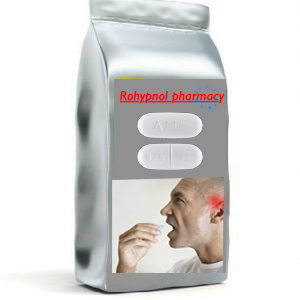What are Dilaudid and Dilaudid Oral Solution?
Dilaudid 4 mgTablets and Dilaudid Oral Solution are:
buy dilaudid 4 mg online , Strong prescription pain medicines that contains an opioid (narcotic) that is used to manage pain severe enough to require an opioid analgesic, when other pain treatments such as non-opioid pain medicines do not treat your pain well enough or you cannot tolerate them.
Opioid pain medicines that can put you at risk for overdose and death. Even if you take your dose correctly as prescribed you are at risk for opioid addiction, abuse, and misuse that can lead to death.
Important information about Dilaudid:
- Get emergency help right away if you take too much Dilaudid Tablets or Dilaudid Oral Solution (overdose).
What are possible side effects of Dilaudid and Dilaudid Oral Solution?
The possible side effects of DILAUDID Tablets and DILAUDID Oral Solution:
- Constipation,
- nausea,
- sleepiness,
- vomiting,
- tiredness,
- headache,
- dizziness,
- abdominal pain
Call your healthcare provider if you have any of these symptoms and they are severe.
Get emergency medical help if you have:
- Trouble breathing,
- shortness of breath,
- fast heartbeat,
- chest pain,
- swelling of your face,
- tongue, or throat,
- extreme drowsiness,
- light-headedness when changing positions,
- feeling faint,
- agitation,
- high body temperature,
- trouble walking,
- stiff muscles, or
- mental changes such as confusion.
These are not all the possible side effects of DILAUDID Tablets and DILAUDID Oral Solution. Call your doctor for medical advice about side effects. You may report side effects to FDA at 1-800-FDA-1088.
DESCRIPTION
DILAUDID (hydromorphone hydrochloride), a hydrogenated ketone of morphine, is an opioid agonist.
DILAUDID Tablets are supplied in 2 mg, 4 mg, and 8 mg tablets for oral administration. The tablet strengths describe the amount of hydromorphone hydrochloride in each tablet.
DILAUDID Oral Solution is supplied as 5mg/5 mL (1 mg/mL) viscous liquid.
The chemical name is 4,5α-epoxy-3-hydroxy-17-methylmorphinan-6-one hydrochloride. The molecular Weight is 321.80. Its molecular formula is C17H19NO3·HCl, and it has the following chemical structure:
 |
Hydromorphone hydrochloride is a white or almost white crystalline powder that is freely soluble in water, very slightly soluble in ethanol (96%), and practically insoluble in methylene chloride.buy dilaudid 4 mg online
The 2 mg, 4 mg, and 8 mg tablets contain the following inactive ingredients: lactose anhydrous and magnesium stearate. DILAUDID Tablets may also contain traces of sodium metabisulfite.
The 2 mg tablets also contain D&C red #30 Lake dye, and D&C yellow #10 Lake dye.
The 4 mg tablets also contain D&C yellow #10 Lake dye.
Each 5 mL (1 teaspoon) of DILAUDID Oral Solution contains 5 mg of hydromorphone hydrochloride. The inactive ingredients are purified water, methylparaben, propylparaben, sucrose, and glycerin. DILAUDID Oral Solution may contain traces of sodium metabisulfite.
INDICATIONS
DILAUDID Oral Solution and DILAUDID Tablets are indicated for the management of pain severe enough to require an opioid analgesic and for which alternative treatments are inadequate.
Limitations Of Use
Because of the risks of addiction, abuse, and misuse with opioids, even at recommended doses ,see WARNINGS AND PRECAUTIONS, reserve DILAUDID Oral Solution and DILAUDID
Tablets for use in patients for whom alternative treatment options [e.g., non-opioid analgesics or opioid combination products]:
- Have not been tolerated, or are not expected to be tolerated,
- Have not provided adequate analgesia, or are not expected to provide adequate analgesia
DOSAGE AND ADMINISTRATION
Important Dosage And Administration Instructions
Ensure accuracy when prescribing, dispensing, and administering DILAUDID Oral Solution to avoid dosing errors due to confusion between mg and mL, which could result in accidental overdose and death. Ensure the proper dose is communicated and dispensed. When writing prescriptions, include both the total dose in mg and the total dose in volume.
Instruct patients to obtain a calibrated measuring cup/syringe for administering DILAUDID Oral Solution to ensure that the dose is measured and administered accurately. buy dilaudid 4 mg online
Do not use household teaspoons or tablespoons to measure DILAUDID Oral Solution, as using a WARNINGS AND PRECAUTIONS].
- Use the lowest effective dosage for the shortest duration consistent with individual patient treatment goals [see WARNINGS AND PRECAUTIONS].
- Initiate the dosing regimen for each patient individually, taking into account the patient’s severity of pain, patient response, prior analgesic treatment experience, and risk factors for addiction, abuse, and misuse [see WARNINGS AND PRECAUTIONS].
- Monitor patients closely for respiratory depression, especially within the first 24 to 72 hours of initiating therapy and following dosage increases with DILAUDID Oral Solution or DILAUDID Tablets and adjust the dosage accordingly [see WARNINGS AND PRECAUTIONS].
Initial Dosage
Initiating Treatment With DILAUDID Oral Solution Or DILAUDID Tablets
Dilaudid Oral Solution
Initiate treatment with DILAUDID Oral Solution in a dosing range of one-half (2.5 mL) to two teaspoonsful (10 mL), 2.5 mg to 10 mg, every 3 to 6 hours as needed for pain.
Dilaudid Tablets
Initiate treatment with DILAUDID Tablets in a dosing range of 2 mg to 4 mg, orally, every 4 to 6 hours.
Conversion From Other Opioids To DILAUDID Oral Solution Or DILAUDID Tablets
There is inter-patient variability in the potency of opioid drugs and opioid formulations. Therefore, a conservative approach is advised when determining the total daily dosage of DILAUDID Oral Solution or DILAUDID Tablets. It is safer to underestimate a patient’s 24-hour DILAUDID dosage than to overestimate the 24-hour dosage and manage an adverse reaction due to overdose.
In general, it is safest to start DILAUDID therapy by administering half of the usual starting dose every 3 to 6 hours for DILAUDID Oral Solution; and every 4 to 6 hours for DILAUDID Tablets. The dose of DILAUDID can be gradually adjusted until adequate pain relief and acceptable side effects have been achieved [see Dosage Modifications In Patients With Renal Impairment].
Conversion From DILAUDID Oral Solution Or DILAUDID Tablets To Extended-Release Hydromorphone Hydrochloride
The relative bioavailability of DILAUDID Oral Solution and DILAUDID Tablets compared to extended-release hydromorphone hydrochloride is unknown, so conversion to extended-release tablets must be accompanied by close observation for signs of excessive sedation and respiratory depression.
Dosage Modifications In Patients With Hepatic Impairment
Initiate treatment with one-fourth to one-half the usual DILAUDID starting dose depending on the degree of impairment [see Use In Specific Populations, and CLINICAL PHARMACOLOGY].
Dosage Modifications In Patients With Renal Impairment
Initiate treatment with one-fourth to one-half the usual DILAUDID starting dose depending on the degree of impairment [see Use In Specific Populations, and CLINICAL PHARMACOLOGY].
Titration And Maintenance Of Therapy
Individually titrate DILAUDID Oral Solution or DILAUDID Tablets to a dose that provides adequate analgesia and minimizes adverse reactions. Continually reevaluate patients receiving DILAUDID Oral Solution or DILAUDID Tablets to assess the maintenance of pain control and the relative incidence of adverse reactions, as well as monitoring for the development of addiction, abuse, or misuse [see WARNINGS AND PRECAUTIONS]. Frequent communication is important among the prescriber, other members of the healthcare team, the patient, and the caregiver/family during periods of changing analgesic requirements, including initial titration.
buy dilaudid 4 mg online
If the level of pain increases after dosage stabilization, attempt to identify the source of increased pain before increasing the DILAUDID Oral Solution or DILAUDID Tablets dosage. If unacceptable opioid-related adverse reactions are observed, consider reducing the dosage. Adjust the dosage to obtain an appropriate balance between management of pain and opioid-related adverse reactions.
For chronic pain, doses should be administered around-the-clock. A supplemental dose of 5 to 15% of the total daily usage may be administered every two hours on an as-needed basis.
Disontinuation Of DILAUDID Oral Solution Or DILAUDID Tablets
When a patient who has been taking DILAUDID Oral Solution or DILAUDID Tablets regularly and may be physically dependent no longer requires therapy with DILAUDID, taper the dose gradually, by 25% to 50% every 2 to 4 days, while monitoring carefully for signs and symptoms of withdrawal. If the patient develops these signs and symptoms, raise the dose to the previous level and taper more slowly, either by increasing the interval between decreases, decreasing the amount of change in dose, or both. Do not abruptly discontinue DILAUDID Oral Solution or DILAUDID Tablets in a physically dependent patient. [see WARNINGS AND PRECAUTIONS, Drug Abuse And Dependence].
HOW SUPPLIED
Dosage Forms And Strengths
DILAUDID Oral Solution: 5 mg/5 mL (1 mg/mL) of hydromorphone hydrochloride in a clear, colorless to pale yellow, slightly viscous liquid.
DILAUDID Tablets:
- 2 mg tablets (light orange, round, flat-faced tablets, with beveled edges, debossed with a “P” on one side and the number “2” on the opposite side)
- 4 mg tablets (light yellow, round, flat-faced tablets, with beveled edges, debossed with a “P” on one side and the number “4” on the opposite side)
- 8 mg tablets (white, triangular shaped tablets, debossed with a “P” and an inverted “P” separated with a bisect on one side of the tablet and debossed with the number “8” on the other side of the tablet)
Storage And Handling
DILAUDID is available as follows:
Oral Solution 5 mg/5 mL: a clear, colorless to pale yellow, slightly viscous liquid.
NDC 42858-416-16: Bottles of 1 pint (473 mL)
2 mg Tablets: light orange, round, flat-faced tablets, with beveled edges, debossed with a “P” on one side and the number “2” on the opposite side.
NDC 42858-122-01: Bottles of 100
NDC 42858-122-25: Unit Dose Packages of 100 (4×25)
4 mg Tablets: light yellow, round, flat-faced tablets, with beveled edges, debossed with a “P” on one side and the number “4” on the opposite side.
NDC 42858-234-01: Bottles of 100
NDC 42858-234-25: Unit Dose Packages of 100 (4×25)
NDC 42858-234-50: Bottles of 500
8 mg Tablets: white, triangular shaped tablets debossed with a “P” and an inverted “P” separated with a bisect on one side of the tablet and debossed with the number “8” on the other side of the tablet.
NDC 42858-338-01: Bottles of 100
Store at 25°C (77°F); excursions permitted to 15° to 30°C (59° to 86°F). See USP Controlled Room Temperature.


